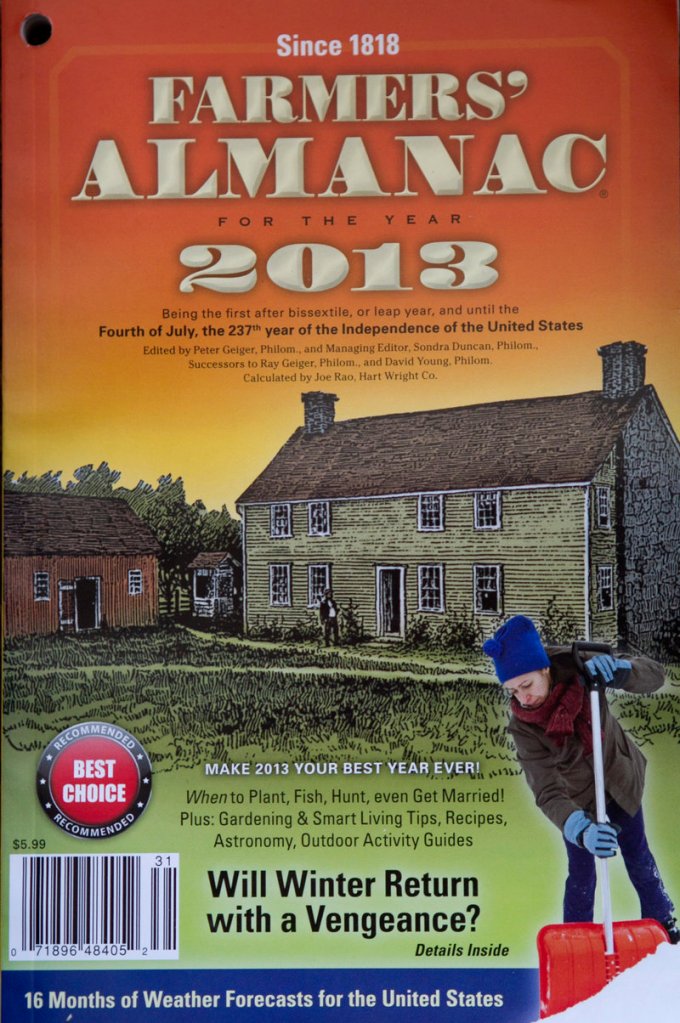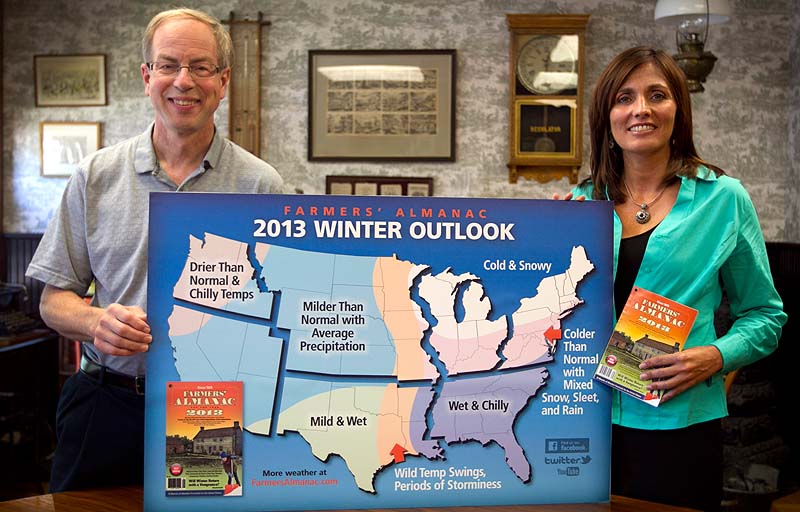LEWISTON – The weather world is full of high-profile meteorologists like NBC’s Al Roker and the Weather Channel’s Jim Cantore. But the guy making the forecasts for the Farmers’ Almanac is more like the man behind the curtain.
He’s cloaked in mystery.
The publisher of the 196-year-old almanac, which goes on sale this week, takes great pains to protect the identity of its reclusive weather soothsayer, who operates under the pseudonym Caleb Weatherbee. Caleb’s real name and hometown are a secret. And so is his age-old formula used for making long-term weather forecasts.
His forecast for the coming winter suggests that people from the Great Lakes to northern New England should get out their long johns and dust off their snow shovels because it’s going to be cold and snowy. It’s also supposed to be wet and chilly in the Southeast, and milder for much of the rest of the nation.
Even just to speak to the forecaster, the almanac would agree only to an unrecorded phone call with the man from an undisclosed location.
“It’s part of the mystique, the almanac, the history,” said editor Peter Geiger of the current prognosticator, the almanac’s seventh, who has been underground since starting the job in the 1980s.
The weather formula created by almanac founder David Young in 1818 was based on planetary positions, sun spots and lunar cycles. Since then, historical patterns, weather data and a computer have been added to the mix.
In an election season, the almanac dubbed its forecast “a nation divided” because there’s a dividing line where winter returns for much of the East, with milder weather west of the Great Lakes.
Scientists generally don’t think too much of the almanac’s formula.
Ed O’Lenic, operations chief for NOAA’s Climate Prediction Center, declined to knock the almanac’s methodology but said sun spots and moon phases aren’t used by modern-day meteorologists.
“I’m sure these people have good intentions but I would say that the current state of the science is light years beyond what it was 200 years ago,” O’Lenic said from Maryland.
In this year’s edition, the almanac’s editors are contrite about failing to forecast record warmth last winter, but they suggested readers should go easy on the publication — and on Caleb — because nobody forecast 80-degree weather in March that brought the ski season to a rapid end in northern New England.
“Let’s face it — the weather was so wacky last year. It was so bizarre,” said Sandi Duncan, managing editor, pointing out that NOAA and Accuweather also missed the mark.
Indeed, NOAA and Accuweather didn’t project the extent of the warm winter.
“We missed it too, to put it bluntly,” said Tom Kines, a meteorologist at Accuweather in State College, Pa. “It was a weird winter last year.”
The Maine-based Farmers’ Almanac is not to be confused with the New Hampshire-based Old Farmer’s Almanac. Both issue annual forecasts, with the Old Farmer’s Almanac scheduled for next month.
Geiger, who keeps a copy of Weatherbee’s secret weather formula in a secure location, is quick to point out that there’s more to the almanac than just weather forecasts. Hearkening to its old traditions, the folksy almanac features recipes, gardening tips, jokes, facts and trivia, and a guide to a simpler life.
For example, who knew that you could clean your toilet by pouring in Coca-Cola instead of harsh chemicals, or that putting a spoonful of vinegar in a pet’s water dish keeps fleas at bay?
As for the weather, almanac readers say it’s all good, clean fun.
“It’s a fun publication to get and to read, to watch and see how accurate it is,” said Wanda Monthey of Alexandria, Va. “It’s a lot like a game.”
Send questions/comments to the editors.



